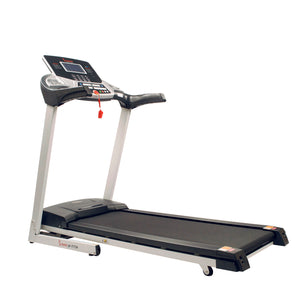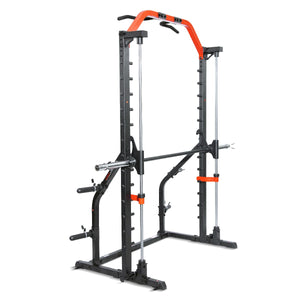When it comes to nutrition the trickiest macronutrient is fats. Fats, known as ‘fatty acids’ or ‘lipids' are a triglyceride (made of three fatty acid molecules) structure in our body. Years ago, doctors may have suggested to patients to limit dietary fats to avoid weight gain and other health problems like heart disease. Recent studies have taught us that not all fats are bad for you. Healthy fats have many great functions in the body:
- Gives you energy
- Helps build cells
- Protects your organs
- Helps your body absorb vitamins from the food you eat
- Helps make hormones
The key is to have a good balance of healthy fats. Learn through this article the best fats to consume as part of a nutritious, well-balanced diet.
Essential Fatty Acids
Most of the fat we need can be made by our bodies, but there are some fats that we cannot make. We get these fatty acids from the food we eat. These fatty acids are called ‘essential’ fatty acids known as Omega-3 and Omega-6. Diets deficient in Omega-3 with too much Omega-6 lead to increased inflammation in the body. Omega-3 fatty acids (good omegas) are found in cold water fish, fish oil, flaxseed oil, ground flax, avocado, and walnuts. Omega-6 fatty acids come from nuts, corn oil, and seeds.
Saturated vs. Unsaturated Fats
There are three main types of fats in the food that we eat – saturated, monounsaturated, and polyunsaturated. Too much fat and too much of the wrong fat can lead to long term health issues. When it comes to dietary fat, what matters most is the type of fat you eat.
Unsaturated fats come from plant foods and oils. These fats are healthy but should be consumed in moderation. There are two types of Unsaturated fats: Mono-unsaturated and Poly-unsaturated.
Benefits of Mono-Unsaturated Fats and Oils
- Decrease levels of LDL (bad) cholesterol in your body
- Increase levels of HDL (healthy) cholesterol in your body
Food Sources Include:
- Olive oil
- Canola oil
- Peanuts, peanut oil, and natural peanut butter
- Avocado
- Almonds (raw)
- Cashews (raw)
Poly-Unsaturated Fats and Oils
- Decrease levels of LDL (bad) cholesterol in your body
- Omega-3 fats increase levels of HDL and decrease levels of triglycerides
Food Sources Include:
- Walnuts
- Ground flax seed and flax seed oil
- Hemp seed chia seed
- Canola oil
- Fatty fish such as tuna, salmon, tilapia
Saturated Fats
Although not as harmful as processed foods, saturated fats should be consumed less frequently. Saturated fats are absorbed from animal products. Saturated fats tend to raise LDL levels and are found in foods like coconut oil, cocoa butter, and palm oil. Foods that are high in saturated fat include red meats, processed meats, and whole dairy products. It is suggested to cut back on these high saturated fats and replace them with lean meats, plant products, and lower-fat dairy products.
Trans Fat
According to the Cleveland Clinic beginning in January 2020, the FDA has banned most manufacturers from using artificial trans fat in food products.(1) Trans fats are produced when a manufacturer places hydrogen atoms in a product to stop it from producing natural oil. This process is called hydrogenation. Foods that have Trans Fat:
- Store-bought crackers and cookies
- Store-bought cakes, pie crusts, pastries, donuts
- Vegetable shortening
- Hard margarine
- French fries, potato chips, and corn chips
- Deep-fried foods
Let's learn how to read about all of these fats on a food label!
Reading a Nutrition Label
Fats are high in caloric intake, so it's important to be able to differentiate between saturated or unsaturated fats. Saturated fat should be listed on the nutrition label, as well as the total fat.
Check the nutrition information provided by Dedicated Senior Medical Center. (2) When reading a label determine if a fat is good or bad by starting with a serving of per 100g to see whether the fat content is high, medium or low:
- Low fat means: 3g or less per 100g
- High fat means: 17.5g or more per 100g
- Low saturated fat means: 1.5g or less per 100g
- High saturated fat means: 5g or more per 100g
Beware of low fat label claims. Lower fat could be replaced with higher sugar or salt content. If the sugar and salt content are higher than the original in a low fat option, it would be better to just have a smaller portion of the original.
The Bottom Line
Get most of your fats from unsaturated fat sources. Get the majority of your nutrition from fruits, vegetables, lean meats and proteins, and low fat dairy sources.
1. Cleveland Clinic. (2023, June 5). Trans fat has been banned, but that doesn’t mean you’re free from it. Trans Fat: What It Is and Why It’s Harmful – Cleveland Clinic. https://health.clevelandclinic.org/why-trans-fats-are-bad-for-you/amp/. Accessed 25 July, 2023
2. Dedicated Senior Medical Center. (2023, February 21). 5 Key Steps to Reading a Food Label. Decoding Food Labels. https://www.dedicated.care/articles/5-key-steps-reading-food-label#:~:text=Unsaturated%20fats%2C%20on%20the%20other,5mg%20or%20more%20per%20100g. Accessed 25 July, 2023



D’Annette Stephens is the brand owner of D.TerminedFitness, LLC, a Fitness and Consulting entity. She is a certified ISSA personal trainer, NASM sports performance and nutrition coach, philanthropist, and public speaker. D’Annette is pursuing her Masters degree in Exercise Science with a concentration in Strength and Conditioning at Long Island University-Brooklyn.
She is an advocate for education and representation in the Fitness and Sports Performance industries. She specializes in athletic performance enhancement, functional movement, long-term sustained weight loss and sports nutrition.
























Add Your Name & Email
Please enter your name and email to continue.We won’t display your email publicly.